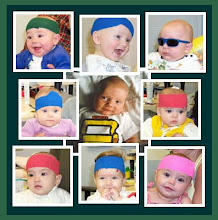
Glittery texts by bigoo.ws
RECOMMENDATION ABSTRACT
Effect of strategies to reduce exposure of infants to environmental tobacco smoke in the home: cross sectional survey
BMJ 2003;327:257 (2 August), doi:10.1136/bmj.327.7409.257
Clare Blackburn, senior lecturer1, Nick Spencer, professor of child health1, Sheila Bonas, lecturer in health psychology2, Christine Coe, research fellow1, Alan Dolan, lecturer1, Rob Moy, senior lecturer in community paediatrics3
1 School of Health and Social Studies, University of Warwick, Coventry CV4 7AL, 2 Department of Epidemiology and Public Health, University of Leicester, Leicester LE1 6TP, 3 Institute of Child Health, Birmingham Children's Hospital, Birmingham
Correspondence to: C Blackburn c.m.blackburn@warwick.ac.uk
Objective To examine parents' reported knowledge and use of harm reduction strategies to protect their infants from exposure to tobacco smoke in the home, and the relation between reported use of strategies and urinary cotinine to creatinine ratios in the infants.
Design Cross sectional survey.
Settings Coventry and Birmingham.
Main outcome measures Parents' reported knowledge and use of harm reduction strategies and urinary cotinine to creatinine ratios in their infants.
Participants 314 smoking households with infants.
Results 86% of parents (264/307) believed that environmental tobacco smoke is harmful, 90% (281/314) believed that infants can be protected from it in the home, and 10% (32/314) were either unaware of measures or reported using none. 65% of parents (205/314) reported using two or more measures, but only 18% (58/314) reported not allowing smoking in the home. No difference was found in mean log e transformed urinary cotinine to creatinine ratio in infants from households that used no measures compared with households that used less strict measures. Mean log cotinine to creatinine ratios were significantly different in households banning smoking in the home compared with those using less strict or no measures. Banning smoking in the home was independently associated with a significant reduction in urinary cotinine to creatinine ratio by a factor of 2.6 (1.6 to 4.2) after adjustment for average household cigarette consumption, tenure, and overcrowding.
Conclusions Less than a fifth of parents in smoking households ban smoking in the home. Banning smoking was associated with a small but significant reduction in urinary cotinine to creatinine ratio in infants, whereas less strict measures compared with no measures had no effect on the infants' exposure to environmental tobacco smoke.
Relevant Articles
- The positive in negatives
Kamran AbbasiBMJ 2003 327: 0. [Extract] [Full Text] [PDF]
The best way to protect infants is to ban smoking in the home BMJ 2003 327: 0. [Full Text] [PDF] - This article has been cited by other articles:
- Winickoff, J. P., Park, E. R., Hipple, B. J., Berkowitz, A., Vieira, C., Friebely, J., Healey, E. A., Rigotti, N. A. (2008). Clinical Effort Against Secondhand Smoke Exposure: Development of Framework and Intervention. Pediatrics 122: e363-e375 [Abstract] [Full text]
- Rainio, S. U., Rimpela, A. H. (2008). Home smoking bans in Finland and the association with child smoking. Eur J Public Health 18: 306-311 [Abstract] [Full text]
Robinson, J., Kirkcaldy, A. J. (2007). 'Imagine all that smoke in their lungs': parents' perceptions of young children's tolerance of tobacco smoke. Health Educ Res 0: cym080v1-cym080 [Abstract] [Full text] - Parker, M., Sharif, I. (2006). Inner-City Adults' Knowledge About the Effects of Cigarette Smoking on Child Health. CLIN PEDIATR 45: 335-339 [Abstract]
- Thomson, G., Wilson, N., Howden-Chapman, P. (2006). Population level policy options for increasing the prevalence of smokefree homes.. J. Epidemiol. Community Health 60: 298-304 [Abstract] [Full text]
- Spencer, N, Blackburn, C, Bonas, S, Coe, C, Dolan, A (2005). Parent reported home smoking bans and toddler (18-30 month) smoke exposure: a cross-sectional survey. Arch. Dis. Child. 90: 670-674 [Abstract] [Full text]
- Winickoff, J. P., Berkowitz, A. B., Brooks, K., Tanski, S. E., Geller, A., Thomson, C., Lando, H. A., Curry, S., Muramoto, M., Prokhorov, A. V., Best, D., Weitzman, M., Pbert, L., for the Tobacco Consortium, Center for Child Healt, (2005). State-of-the-Art Interventions for Office-Based Parental Tobacco Control. Pediatrics 115: 750-760 [Abstract] [Full text]
- Leung, G. M., Ho, L.-M., Lam, T.-H. (2004). Secondhand Smoke Exposure, Smoking Hygiene, and Hospitalization in the First 18 Months of Life. Arch Pediatr Adolesc Med 158: 687-693 [Abstract] [Full text]
Provided by
DR WIDODO JUDARWANTO
SAVE CHILDRENS FROM SMOKE
Working together make a smoke-free homes and smoke-free zones for all children
Yudhasmara Foundation
JL TAMAN BENDUNGAN ASAHAN 5 JAKARTA PUSAT, JAKARTA INDONESIA 10210
PHONE : (021) 70081995 – 5703646
email : cfc2006@hotmail.com, judarwanto@gmail.com
www.savechildfromsmokers.blogspot.com/

















Tidak ada komentar:
Posting Komentar